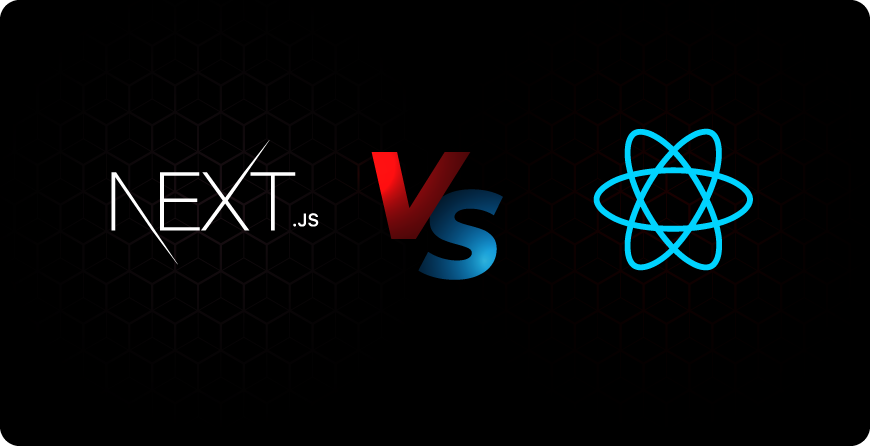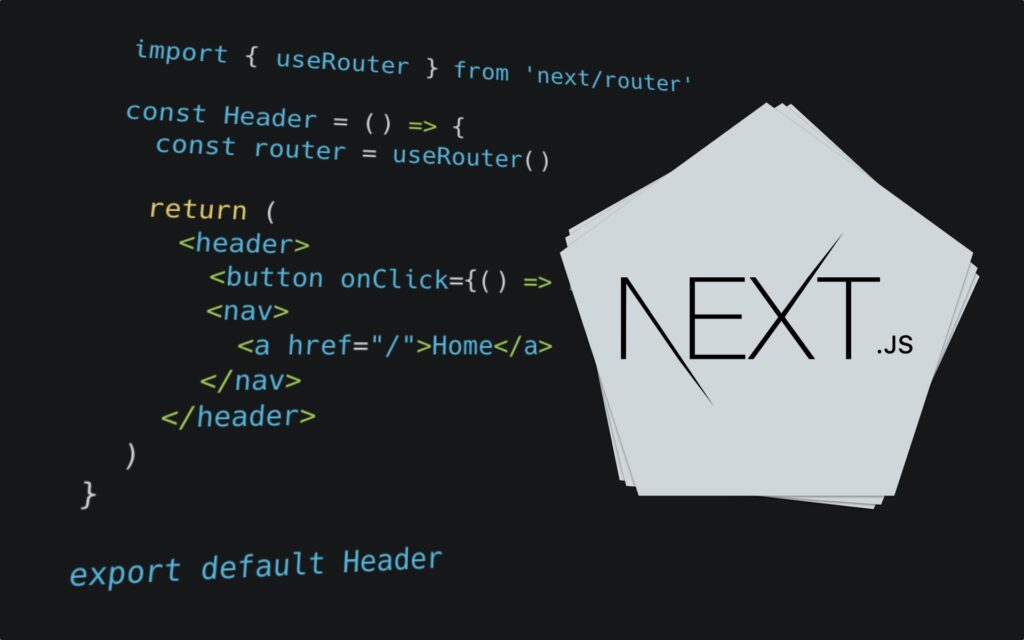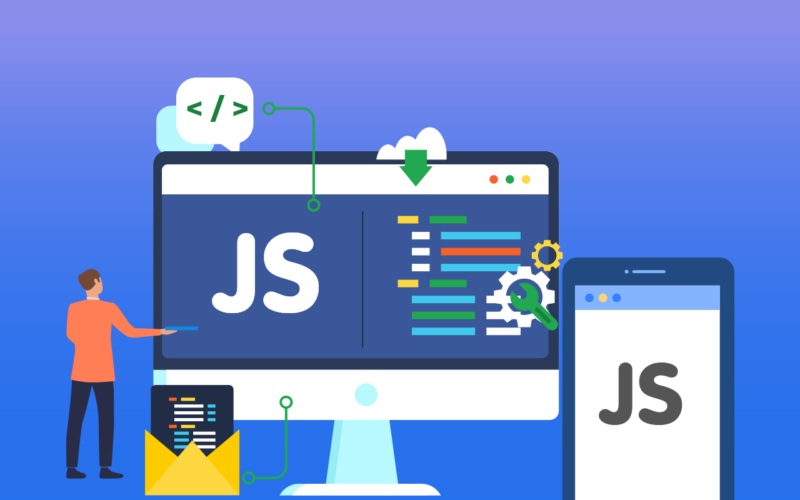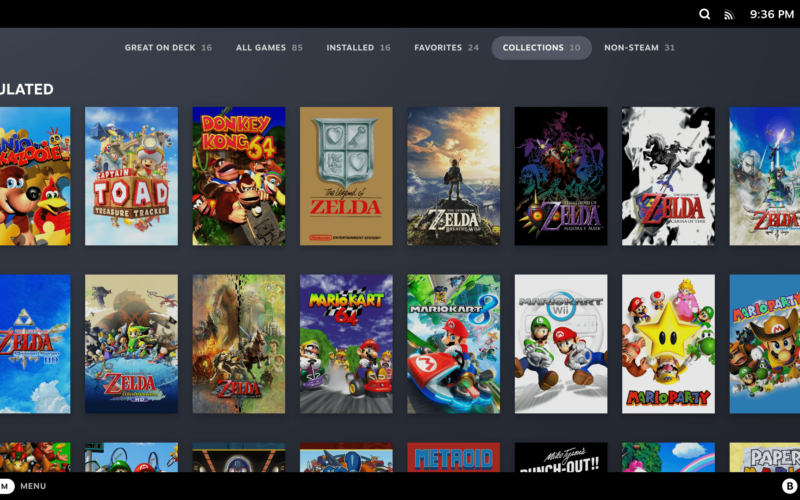Are you a web developer looking to create static web pages, eCommerce platforms, or even simple landing pages?
With the market overflowing with the JS libraries and frameworks, sometimes, as a developer, it can be quite a headache to choose your front-end development tools for your project.
Even though creators keep coming up with new libraries and frameworks every year, Next JS and React are still the top preferences of over 70% of the developers. After going through numerous developers’ forums and communities, I’ve noticed a visible confusion amongst users regarding the two platforms.

If you are going through the same paradox between Next JS vs React? Stay with me and I will talk about both the platforms in detail along with their key features, advantages, and drawbacks. I will also make a one-to-one comparison between the two and hopefully, in the end, we will be able to determine which one is the right platform to build your next project on.
Next JS Vs React: Key Differences
First, let’s shed some light on the major differences between the two:
| Next JS | React | |
| Learning Curve | Basic knowledge of React is required to understand the development process | Basic knowledge of CSS, HTML and Javascript is required |
| Highlighted Feature | Features Auto code splitting to discard unwanted codes loading | Features Reusable components to provide faster and smooth development |
| Dependency | Next JS works on React. | React doesn’t require any platform to run |
| Ease of Use | Required less coding | Requires more coding but easy to follow |
| Performance | Faster applications and pages, thanks to SSR and static sites | Decent speed but no code splitting means slow performance |
Next JS: Introduction
Developed by Vercel back in 2016, the Next.JS has been one of the most prominent open-source web-development platforms of the past decade. It’s a framework for reacting that developers can use to create JS Web applications, static single-page applications, landing pages, SEO-friendly websites, and eCommerce platforms.

Due to its support for server-side rendering (SSR), the program is perfect to create high-speed web pages and static websites.
Next.Js offer other important features such as building size optimization, static export, pre-rendering, a smooth and quick compilation, and typeScript support
The program seamlessly integrates to React and works upon Javascript runtime and Javascript transpiler meaning you can use the latest JS features to compile into old ones/standard ones for the web browser.
Let’s have a look at some key features of Next.JS
- It’s relatively easy to create webpages using the next JS. All you need to do is create the page and link all the elements to the header.
- The less coding improves the overall performance and quality of the development. The pages/applications created on Next JS are quicker to load because of static site generation and SSR.
- Instant rendering makes it very easy to apply edits as you can see them within a few seconds just by refreshing the page.
- The version 10 update introduced an Image optimization feature that makes the image rending lightning fast by using resized images with a proper format.
- Next JS supports the popular JavaScript-based programming language Typescript which makes it a preferred option for many developers.
- It’s easy to create keywords, phrases, and titles for each page with Next JS. This helps with the SEO and you can place all the phrases easily by using the head component on any page you want.
What is React?
React was created in 2011 by Jordan Walke and was made available for public use in 2013. Since then, the platform has witnessed exponential growth.
It’s one of the most popular open-source JavaScript libraries that is used by millions of developers to create interactive user interfaces, web applications, dashboards, SEO-friendly pages, and much more.

Although it may require a steep learning process, the React elements, due to their descriptive character, are extremely easy to use and can accommodate complicated mechanisms while retaining flexibility.
Currently React is being maintained by Meta (Facebook)Group. Even after a decade after its initial launch, React has been the first choice of many top-level enterprises including some big names like Facebook, Netflix, BBC, and much more.
Let’s discuss some key features of React:
- React works on a one-way data flow principle. That simply means that you can edit a section without affecting the entire application interface. React doesn’t need to be refreshed every time an edit has been made.
- React Developer tools is a browser extension you can download for free for Chrome and Firefox. These developer tools assist you throughout the project.
- Another great React feature is Create React App. It’s a service by Facebook that allows you to create applications without the need to learn or configure major building tools.
- React supports Redux – Another famous Javascript library that is widely used with other frameworks/libraries in web development. It adds some key enhancements to your projects such as overall quicker development, better stability, compatibility with multiple environments, and much more. Simply download the React Redux tool to merge both the libraries.
- Virtual DOM or Virtual Document Object Model is one of the best features of React. It allows developers to modify the smallest element of the code without having any impact on the entire application or webpage.
- React allows developers to use certain sections of the codes (Reusable Components) to use as many times as they want. These reusable components save a lot of time and improve the overall development process.
Next JS Vs React: Advantages and Disadvantages
| Next JS | Create | |
Advantages | Faster project Development | Easier for Javascript experts |
| SEO-Friendly pages | Reusable components allow easy editing | |
| Image optimization for fast rendering | Customizable with the help of Redux | |
| Better user Experience | Huge developers’ community | |
Disadvantages | Smaller community compared to react. | Depends on other tools to work to its full potential |
| Node.js tool is required to create dynamic paths | Documentation gets outdated due to the short development cycle |
The Final Verdict: Which One is the Right for You?
The big question now is – Which one do you need for your project?
The selection of libraries or frameworks depends entirely on your project requirements and on your personal preferences as well. Next JS and React both have emerged as powerful and essential tools for nearly any kind of web development.
While Next JS features SSR and static site development, it might take a while for you to get hold of the tools and features before you start developing.

React, on the other hand, offers a huge developers library, and reusable components, and overall creates better-looking and efficient applications. However, since it’s a library, it relies on other tools and extensions to work to its full potential.
However, one important factor that might help you make up your mind is that React is an open JS library and can function independently but Next JS needs React to run meaning you need to learn both in order to make a project on Next JS.











